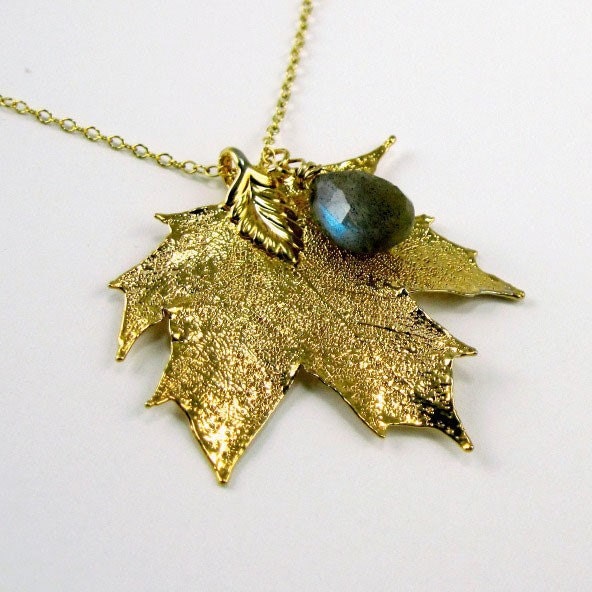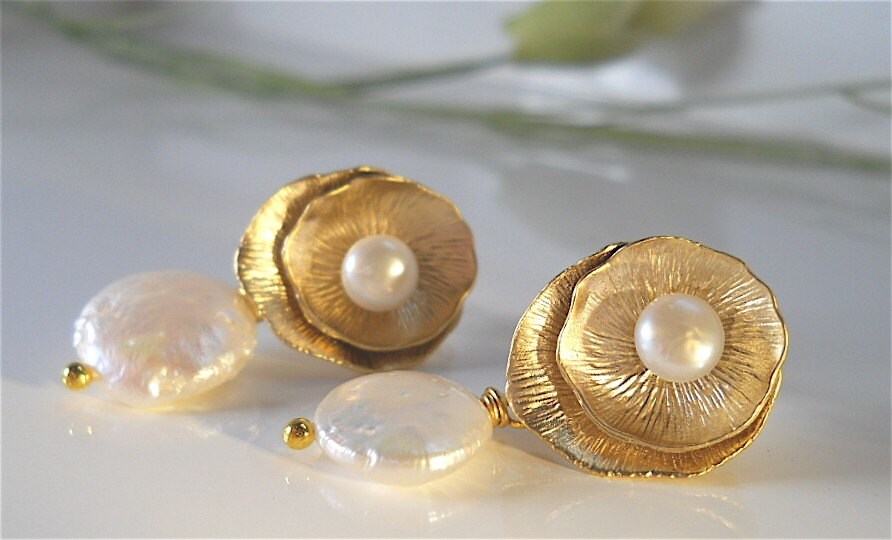 |
| Forest Nocturne by MysticWynd |
Shopping for jewelry can be a lesson in patience and a little knowledge can make it all the easier, so I will be doing a series of blogs delving into the facts and myths about gold, silver, copper, nickel, and “other” metals.
Today I will talk about gold. First though, let me touch on the “K” designation. K stands for karat which is a measure of the fineness or pureness of gold, as opposed to a carat which is a unit of weight for measuring the weight of precious stones. These are not to be confused with a carrot, which is a yummy vegetable (and a great doggy treat), or Carrot Top, who is just a really weird comedian in my opinion.
So you insist that you only buy PURE gold jewelry? Not unless it is 24k gold (which needs only be at least 99.7% pure gold, so even that may not be pure gold!) Unfortunately, 24k gold is extremely soft and not suitable for creating jewelry settings to hold a stone or other component. It also doesn’t hold up very well for day to day wear since it's prone to scratches and nicks due to its softness. Daily wear would conceivably gradually wear away this soft gold relatively quickly over a short time, making it less than desirable for heavy use. That being said, any other gold is really an alloy, ie., a mixture of metals.
 |
| Citrine Necklace by Jewelry By Jaynemarie |
22K gold (22 parts gold, 2 parts other metals) Gold -91.67% Silver- 5% Copper -2% Zinc-1.33% (This is still considered too soft for fine jewelry)
18K gold (18 parts gold, 6 parts other metals) Gold 75% (The remaining metals can be some combination of copper, silver, iron, silver, cadmium, and/or aluminum)
18K white gold (18 parts gold, 6 parts other metals) Gold 75% and either 25% platinum or palladium or 10% palladium, 10% nickel, and 5% zinc.
18K Rose Gold (18 parts gold, 6 parts other metal) Gold 75% and either 25% copper or 21% copper and 4% sterling silver
14K gold (14 parts gold, 10 parts other metals) Gold 58.3% (The remaining metals can be some combination of copper, silver, iron, silver, cadmium, and/or aluminum)
12K gold (12 parts gold, 12 parts other metals) Gold 50% (The remaining metals can be some combination of copper, silver, iron, silver, cadmium, and/or aluminum)
10K gold (10 parts gold, 14 parts other metals) 41.6% Gold (The remaining metals can be some combination of copper, silver, iron, silver, cadmium, and/or aluminum)
Note: 10K gold is the minimum karat designation that can be called “gold” in the US.
Gold labeling:
Solid Gold – a term used to describe an item that’s at least 10K gold all the way thru. Yes, that means that gold alloys can be called solid gold.
Gold Filled - applies only to items composed of a layer of gold pressed (not alloyed) onto a base metal (usually copper or brass) where the weight of the gold comprises at least 1/20th of the total weight of the item
Gold Plated – applies to items composed of a base metal (usually copper , brass, or silver) which have had a thin layer of gold deposited onto their surface thru chemical or electrochemical means.
I’m going to address Vermeil here, since it considered as a “gold” jewelry finish.
Vermeil - A product that is made from a base of sterling silver that is coated or plated on its surfaces with gold of at least 10K fineness and at a thickness of at least 2.5 microns (100/1,000,000 inch).
Gold TONED items are simply that – gold toned in color. Since there are no composition standards or even a standard definition, it is safe to assume that these items are either plated with or are an alloy of a lower than 10k gold, a copper alloy like brass, or the actual content of the metal is uncertain.
 |
| Freshwater Pearls in Gold Vermeil Shells by YourDailyJewels |
Just remember – all that glitters is not gold – at least not pure gold! But that doesn’t mean that it isn’t beautiful or perfect for that jewelry piece! Think about your needs and your budget when selecting jewelry pieces, but don't get unnecessarily caught up in the idea of "pure gold" as your only option, because in this case, it isn't your only option and may not even be your best option (especially at a market value of nearly $1500 an ounce!!)
I'd love to know if you're a gold addict or if perhaps you've been cashing in on the gold drive lately... so leave me a comment and then have a wonderful day, my friends!
xo,


2 comments:
Great post, as usual. I used to be a gold addict, until I learned that gold-filled looks and wears a lot like gold, at a fraction of the cost. Now I can have a lot more jewelry!
Thank you for the info and for featuring my earrings :)
Great article explaining the difference between different types of gold jewelry.
I love gold, but it must be gold, not gold toned and if I want a cheaper price point, I go to gold filled instead of vermeil or other plating technique. You get more gold with gold filled and it looks, feels and weighs the same as 14K gold.
Thank you for including my Handmade Sterling Silver, Gold and Citrine Filigree Necklace
Post a Comment